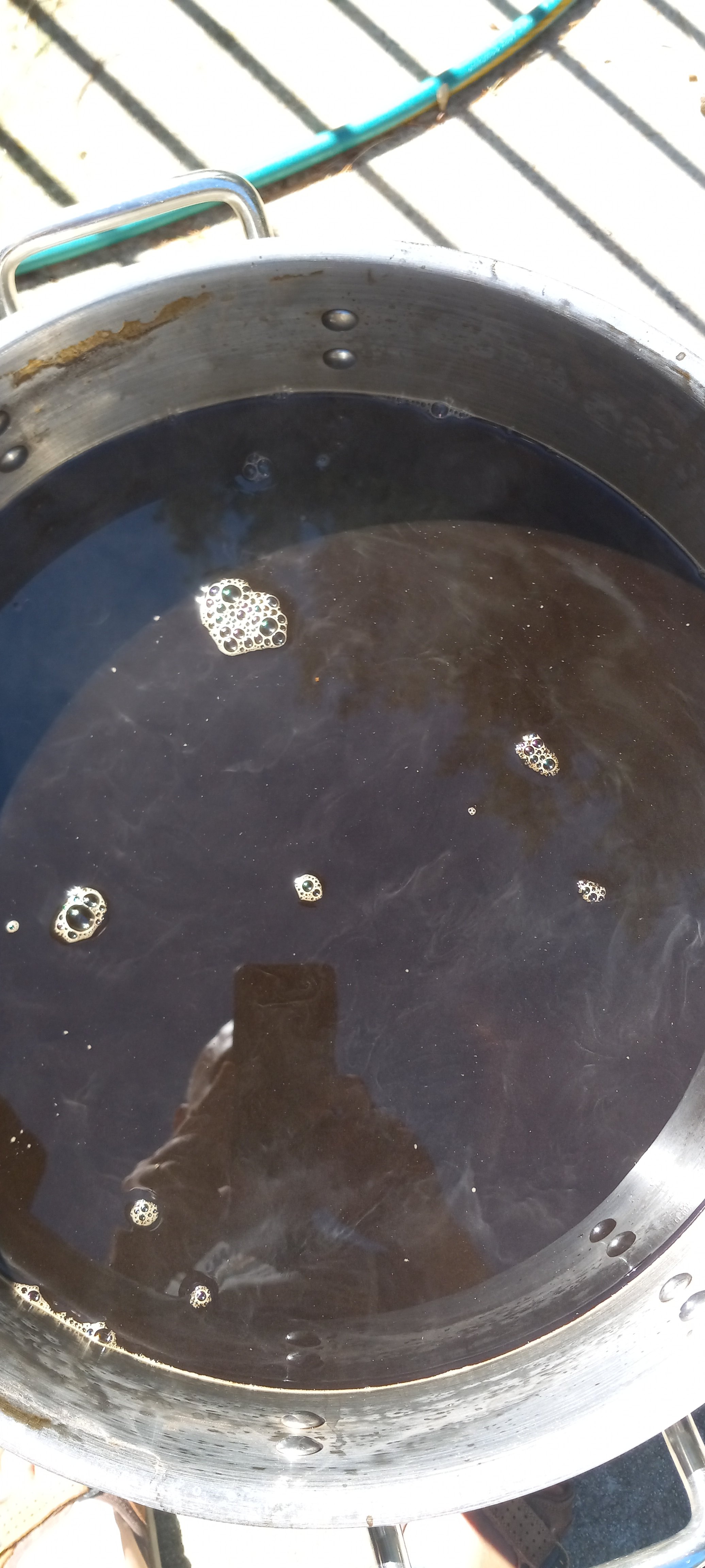BrewinInPA
Well-Known Member
My brew kettle thermometer has a "mash-in" label at around 120F. Is there some advantage to mashing in at this temp and then heating to saccarification temp? I always thought you would dough in at your strike temp.

My brew kettle thermometer has a "mash-in" label at around 120F. Is there some advantage to mashing in at this temp and then heating to saccarification temp? I always thought you would dough in at your strike temp.
Ok good. That's what I thought too.I do pretty much 100% single temperature mash where I heat my strike water above my target, such that adding the grain will lower the temperature to my target mash temp.
So no disadvantage then in doing a longer mash? Is there any length of mash time that is "too long" ?I mash in at ambient temps (80s in the morning right now) and turn the element on and recirc pump. It's up to 150' pretty quick anyway, like right after my shower. I go to work and let it mash all day.
yes, that will help. Most conversion happens in the first 20 minutes or so I've heard. But with time, eventually all the starch will/should convert...Can a longer mash compensate for a less-fine grain crush? I currently do not have a grain mill so I will be doing all-grain with pre-crushed malt that may be crush size optimized for a traditional mash and sparge. I have heard that a finer crush is better for BIAB.
OK .. good that's what I understood too from what I have read. Is the Iodine test more accurate than a decent refractometer? If I hit within +/- 0.02 on my first few attempts, I will be happy. Also I am not averse to adding a little lite DME if I undershoot until I get this all figured out.You will have to compute the potential sugars from your grain bill and factor in your mash water volume and see if you are reaching full conversion. But that's not really how most measure their mash progression. I think they do an iodine test to see if there is any starch left or if it's all gone(conversion complete).
And there will always be sugars left in the bag after you drain it anyway. squeeze or sparge it to minimize the leftovers.
With that length mash, what's your rationale for doing a mash out?not that I've seen. Brulosophy did that too and didn't notice anything.
I've been doing 10 hour mashes for a year now. No issues for me. I have everything set up the night before. Mash in in the morning and set my temp controller and go to work. Get home and straight to mash out and boil.
Now I did mash in at night ONCE and let it sit cold (ambient) until the morning, then heat on and left for work. The results were less than desirable to say the least...

Now I did mash in at night ONCE and let it sit cold (ambient) until the morning, then heat on and left for work. The results were less than desirable to say the least...
Can a longer mash compensate for a less-fine grain crush? I currently do not have a grain mill so I will be doing all-grain with pre-crushed malt that may be crush size optimized for a traditional mash and sparge. I have heard that a finer crush is better for BIAB.
yes, that will help. Most conversion happens in the first 20 minutes or so I've heard. But with time, eventually all the starch will/should convert...
Roger that. I have read that for the first few BIAB sessions you should do a 90 minute mash until you get a grip on what your efficiency will be.
Is it reasonable to mash for 60 minutes, then check OG with a refractometer and let it mash for additional time if you have not yet reached your target OG?
Also, as a precaution, I plan to have some light DME standing by so that I can tweak the gravity if necessary. Is this also a common practice when getting started with BIAB?
Yes, a longer mash will compensate for a coarser crush. Conversion rate is controlled by the rate of starch gelatinization. Gelatinization starts at the surface of the grits and proceeds inwards. The larger the grit, the longer it takes to gelatinize. The "most conversion occurs in the first 20 minutes" applies if the grits are small enough.You will have to compute the potential sugars from your grain bill and factor in your mash water volume and see if you are reaching full conversion. But that's not really how most measure their mash progression. I think they do an iodine test to see if there is any starch left or if it's all gone(conversion complete).
And there will always be sugars left in the bag after you drain it anyway. squeeze or sparge it to minimize the leftovers.

really no reason...other than maybe make the wort a "wee bit" less viscous so it lauters out of the bag better...probably not. Either way I gotta heat it to boiling anyway. I just turn up the element and wait until 170 to pull the bag and let it drain while the kettle keeps on heating to boil.With that length mash, what's your rationale for doing a mash out?
Brew on
I don't really recall...it just smelled "sour" in the morning with some "foam"...it was covered all night so I don't think there was any spontaneous fermentation overnight...but apparently it did "something" at 70-80' for 8-10 hours... but I was already "committed" so I turned the heat on to let it mash at 150' all day like I normally do...a little hair of the dog?
If I gelatinize for too long, do I risk ending up with something like this?Yes, a longer mash will compensate for a coarser crush. Conversion rate is controlled by the rate of starch gelatinization. Gelatinization starts at the surface of the grits and proceeds inwards. The larger the grit, the longer it takes to gelatinize. The "most conversion occurs in the first 20 minutes" applies if the grits are small enough.
Using a refractometer to monitor mash progression is really the best way to proceed. The SG at 100% conversion turns out to depend only on: grain weight, grain potential, and strike water volume. Since most grain bills have a potential close to 1.037 or 80%, you can just use that with strike volume and grain weight to figure out your target 100% conversion SG. Mash should be well stirred prior to taking an SG sample as the accuracy depends on the wort being homogeneous throughout the entire wort volume. I have attached a spreadsheet that shows max SG vs. mash thickness (assuming 80% potential.) Sample your mash every 15 minutes or so to see how the conversion is progressing, and determine when it is done (conversion efficiency is high enough to satisfy you.)
The iodine test has issues, and is less accurate than SG monitoring. Most brewers leave the grain bits out of the sample, because they never get a "clean" test if they include the grain. This is because starch remains in the grits, and the mash isn't really done. Soluble starch dissolved in the wort only has a lifetime of a few minutes before it is reduced to dextrins (that will pass the iodine test). Thus you can have starch free wort, while you still have starch left in the grits.
Sugars left in the grain mass after draining is covered by lauter efficiency. Mash efficiency equals conversion efficiency times lauter efficiency. You can readily get conversion efficiency of 95-100%. Lauter efficiency depends on how much wort in left in the grain, and is affected by bag squeezing and sparge method (if any.)
Brew on

f I gelatinize for too long, do I risk ending up with something like this?

Sounds like you did a sour mash. The grain is loaded with lactobacillus which will create lactic acid over a period of 10s of hours.I don't really recall...it just smelled "sour" in the morning with some "foam"...it was covered all night so I don't think there was any spontaneous fermentation overnight...but apparently it did "something" at 70-80' for 8-10 hours... but I was already "committed" so I turned the heat on to let it mash at 150' all day like I normally do...
the end result was a bitter/sour/grapefruit ??? character that was not expected nor particularly pleasant...and i do like hoppy IPA beers...was a distasteful task to drink 5 gallons...
I will not mash cold over night again...grain in and heat on immediately...

Prep everything the night before.I mash in at ambient temps (80s in the morning right now) and turn the element on and recirc pump. It's up to 150' pretty quick anyway, like right after my shower. I go to work and let it mash all day.


protein rest bad? how so? what does it do/cause with modified malts?The 4th edition of "How to Brew" has great info on mash temps and the impacts. My understanding is that with today's well modified malts, a Protein Rest generally does more harm than good.
protein rest bad? how so? what does it do/cause with modified malts?
There is a page and a half in "How to Brew" discussing the Protein Rest impacts (it is a book that I highly recommend to brewers of any experience level). John finishes with:
"Unless you are using less-modified malt or moderately modified malt, the clarity and head retention of your beers will be better without a protein rest." (earlier he recommends a Protein Rest if using 20% or more unmalted wheat, rye, or oats)
Though if you like your beers and your process, then I don't see a major reason to change.
Which edition? John says there is information in the 4th edition that corrects things he originally wrote in the first.
Enter your email address to join: